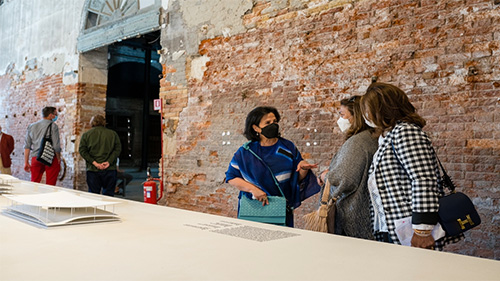Contact Center
.
28 August 2021
Pavilion of the Kingdom of Bahrain
at the 17th International Architecture Exhibition - La Biennale diVenezia
In Muharraq


commissioned by her excellency sheikha mai bint mohammed al khalifa, head of the bahrain authority for culture and antiquities, “in muharraq” is the kingdom of bahrain’s national participation at the 17th international architecture exhibition - la biennale di venezia. the curatorial team is composed of noura al sayeh,architect, and ghassan chemali, architect and heritage consultant both based in bahrain.
located in the arsenale (artiglierie), the pavilion focuses on the unifying qualities of culturally-led regeneration processes, notably through the ongoing development iniatives in the historical core of muharraq city. at the centre of these initiatives is the unesco world heritage site “pearling, testimony of an island economy” (or “pearling path” in short) which embodies the legacy of bahrain’s pearling era. through the rehabilitation of the city’s architectural and urban heritage as well as the conservation of a beach and three oyster beds in the sea, the pearling narrative is being perpetuated while an economic development is being triggered, bringing together several social, environmental, cultural and functional aspects of the city. the process is incremental, continuously a
the pavilion consists of an artificial “plateau” on which the different objects are exposed, taking most of the space in the room, and leavinga narrow circumambulatory passage. it showcases fragment of the ingredients that compose the muharraqi revival process, whether it involves single building projects or urban scale regeneration policies. these fragments include natural components such as oyster shells, mock-ups of new developments such as the public spaces designed by office kgdvs and bas smets, architectural models such as the models of the multistorey car parks designed by christian kerez, original pieces extracted from the traditional muharraqi architec
as the “pearling path” world heritage site revolves around a narrative- that of the foregone pearling economy- so does the pavilion, as its different components tell the chapters of the development’s“story”. while th







